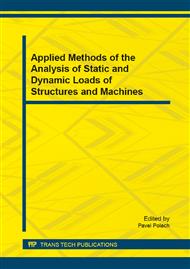[1]
M.S. Morsy, S.H. Alsayed, M. Aqel, Effect of Elevated Temperature on Mechanical Properties and Microstructure of Silica Flour Concrete, International Journal of Civil & Environmental Engineering IJCEE-IJENS 10 (2010) 1-5.
Google Scholar
[2]
P. Padevět, Mechanical Properties of Cement Pastes, in: A. Grmanová, M. Minarik (Eds. ), Proceedings of the International Conference 70 years of FCE ST, Slovak University of Technology, Faculty of Civil Engineering, Bratislava, 2008, pp.1-4.
Google Scholar
[3]
P. Padevět, P. Bittnar, O. Zobal, Changing the Properties of Cement Paste with Addition of Fly Ash in Time, in: M. Růžička, K. Doubrava, Z. Horák (Eds. ), Proceedings of 50th Annual international conference on Experimental Stress Analysis, Czech Technical University in Prague, Faculty of Mechanical Engineering, Tábor, 2012, pp.293-300.
DOI: 10.1016/j.proeng.2012.09.547
Google Scholar
[4]
D.P. Bentz, A.S. Hansen, J.M. Guynn, Optimization of cement and fly ash particle sizes to produce sustainable concretes, Cement & Concrete Composites 33 (2011) 824-831.
DOI: 10.1016/j.cemconcomp.2011.04.008
Google Scholar
[5]
T. Plachý, P. Tesárek, R. Ťoupek, M. Polák, Monitoring of mechanical properties evolution of the cast gypsum, Procedia Engineering 48 (2012) 562-567.
DOI: 10.1016/j.proeng.2012.09.554
Google Scholar
[6]
L. Melzerová, P. Kuklík, M. Šejnoha, Variable local moduli of elasticity as inputs to FEM-based models of beams made from glued laminated timber, Technische Mechanik 32 (2012) 425-434.
DOI: 10.1016/j.proeng.2012.09.533
Google Scholar
[7]
J.G.M. van Mier, Fracture Processes of Concrete, CRC Press, (1997).
Google Scholar
[8]
B. Bahar Demirel, O. Kelestemur, Effect of elevated temperature on the mechanical properties of concrete produced with finely ground pumice and silica fume, Fire Safety Journal 45 (2010) 385-391.
DOI: 10.1016/j.firesaf.2010.08.002
Google Scholar


